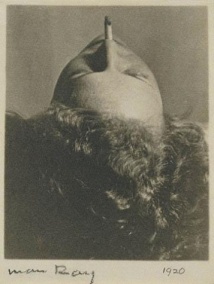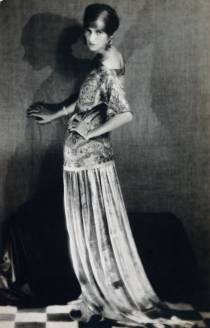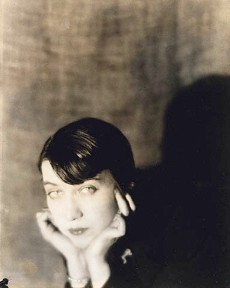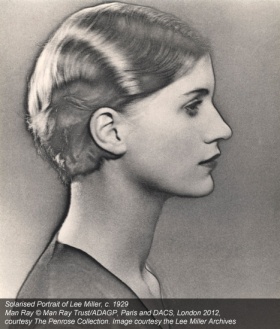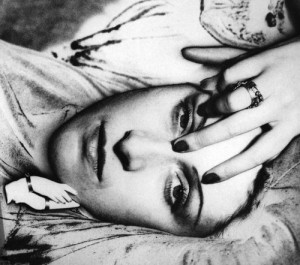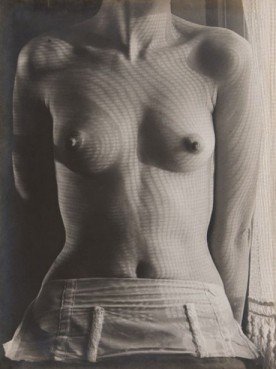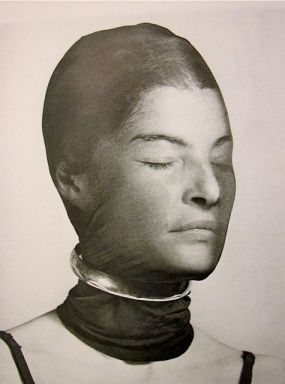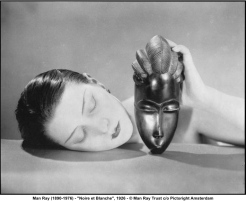So I booked a ticket to visit the Man Ray exhibition at the National Portrait Gallery in Trafalgar Square, London. The show opened 7th Feb and runs until 27th May 2013. It is a good idea to book first, as I tried to go the week before, but it had sold out.
Man Ray was born in the USA, as Michael Emmanuel Radnitzky in 1890, after his family had recently emigrated from the Ukraine in 1886. However, he moves in 1921 to France, to immerse himself with the art and culture of this city. Man Ray initially learnt photography as a way of recording his art assemblages and through out his life would alternate between photographic and other art forms as ways of expressing his ideas. He relinquished painting for a period beginning in 1922 to embark upon his photographic explorations, encouraged by his friend, Marcel Duchamp. Perhaps much of his success can be attributed to his magazine publications, with its growing audience and popularity in the 1920s. He made experimental and ground breaking work as well as documenting famous friends; dancers, poets, writers, artists and art collectors. This particular exhibition focused upon these vibrant and avant-garde characters, documenting the changing styles of fashion, displaying images commissioned for magazines like Vogue or Harper’s Bazaar or a photograph taken to promote a book by an author. The exhibition is also a personal record of his relationships with artist friends and lovers, their face and body transformed to convey an idea as well as reveal their intimate connection with the photographer.
Man Ray described himself as a photometrographer, not willing to label himself as painter, photographer or even fully ground himself in a particular movement. He was not officially part of the Surrealists or Dadaists, but shared similar ideologies such as an openess to fortuitous accidents, using puns and humor in his arrangement of objects.
This image of Kiki de Montparnasses entitled ‘Violin d’Ingres’ references the elongated forms of Ingres’ paintings and also compares Kiki as a hobby or pastime similar to a musical hobby, thus commenting on the objectification of women.
A quote from Under the skin: National Portrait Gallery’s Man Ray exhibition
A compelling new exhibition reveals Man Ray’s ability to capture the soul of his subjects. It’s a rare gift that sets him apart from his fellow Surrealists. By Adrian Hamilton
“Just as Picasso’s artistic course could be viewed through his successive lovers, so could Man Ray’s: the Montparnasse model Kiki after he moved to Paris in 1921, then the American photographer and journalist, Lee Miller, from 1929 to 1932, followed by the Guadeloupe dancer, Ady Fidelin, from 1936 to 1940, when he left war-torn France for the US, where he married Juliet Browner, who stayed with him until his death in 1976. His portraits of them, particularly Lee Miller, are suffused with a sense of both affection and admiration.”
Lee Miller became Man Ray’s assistant and muse after finding him in a cafe and announcing she was his next assistant. They discovered the technique of solarisation when she accidentally turned on the light in the dark room during processing.
The above images were not in the exhibition, but are a couple of my favourite images. Juliet Browner, Man Ray’s last partner is shown wrapped in a scarf.
There is at times a sense of dislocation around Man Ray’s portraits, where bodies and heads appear to float like moons, self-absorbed or dream-like. However, some portraits capture the essence of the sitter, of their strong personality, purposefully constructed infront of the lens.
